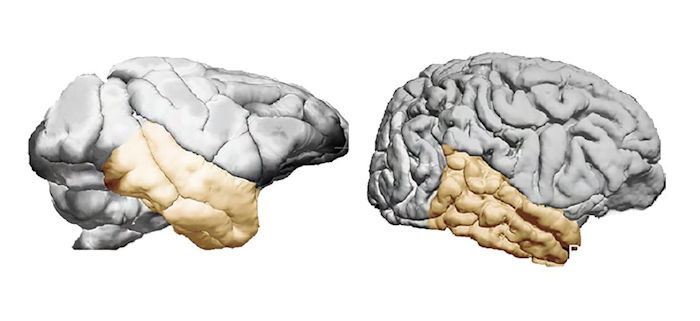Jan Bartek – AncientPages.com – It had been thought to date that the species Homo sapiens has disproportionately large temporal lobes compared to other anthropoid primates, the group including anthropomorphic monkeys and apes. A new study, one of whose authors is Emiliano Bruner, a paleoneurologist at the Centro Nacional de Investigación sobre la Evolución Humana (CENIEH), contradicts that hypothesis.
This work, which has just been published in the American Journal of Biological Anthropology, suggests that the volume of our temporal lobes is just what the size of our brain would suggest, in line with the proportion patterns shared with the rest of the primates.

Brains and temporal lobes in mangabeys and chimpanzees. Credit: A. Pearson
The difference between this result and those published on the same topic 20 years ago is probably due to the expansion of the reference sample (how many species and specimens were analyzed), to the new technologies of digital anatomy, and enhanced statistical techniques.
“The overall volume of a vast cortical region like the temporal lobe does not tell us very much about what is really going on with its many and diverse anatomical elements, but this study is interesting because it lessens the importance previously attached to temporal lobe size in human evolution,” says Bruner.
The temporal lobes are involved in numerous crucial functions including memory, language, the emotions and social dynamics. “Naturally, the complexity of the temporal cortex indicates that it has undergone important specializations in our species, but it is likely that this cannot be ᴀssessed simply by analyzing its overall volume,” adds Bruner.
This study of temporal lobe size in humans and other primates was conducted in collaboration with the Australian National University in Canberra and Indiana University in Bloomington (U.S.).
The study was published in American Journal of Biological Anthropology
Written by Jan Bartek – AncientPages.com Staff Writer





